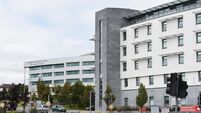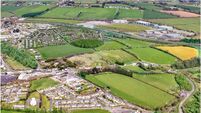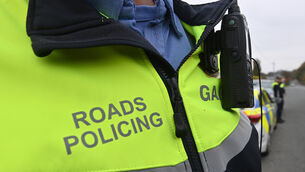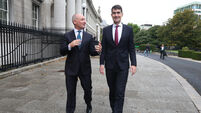UCC expert helps date Britain’s ‘Book of Kells’
The 1,500 gold and silver pieces found by a metal detector enthusiast on a Staffordshire farm in July are mostly military artifacts and weapons.
The British Museum enlisted the help of Professor Elisabeth Okasha, an expert in writing and inscriptions from the Anglo-Saxon period of English history, when they were trying to estimate how old the artifacts were.
“I got a call in early August, asking me to help with an inscription on one particular piece, which is possibly a piece from a shield, or a handle or belt for a sword,” she explained.
Working on photographs of the gold alloy plate with a quote from scriptures, about seven inches long (and folded over, possibly when being hidden) and just over half an inch high, she determined the artefact is probably from the eighth century, around 700-750.
“The lettering is lower case, which is unusual for most of the Anglo-Saxon period, and the use of a silver oxide filling called niello to darken the letters and contrast them with the gold is very typical of the eighth century,” she said.
The writing on the gold piece she examined is a text from the Book of Numbers, although Prof Okasha believes it is more likely to be from Psalm 67, which would have been better known to Anglo-Saxons of the period.
The wording in Numbers 10:35 reads: “cumque elevaretur arca dicebat Moses surge Domine et dissipentur inimici tui et fugiant qui oderunt te a facie tua.” This translates as: “When he had lifted up the ark, Moses said ‘Rise up, Lord, and may your enemies be dispersed and those who hate you be driven from your face.’”
Prof Okasha is one of a few experts on such inscriptions, of which only around 300 legible examples from this period are known to exist.
Pieces from the hoard, which includes five kilograms of gold, were only unveiled this week after a coroner’s inquest officially declared it treasure. Experts have likened the discovery, made by 55-year-old Terry Herbert on a friend’s land, to the Book of Kells which is one of Ireland’s most treasured antiquities.
Some of the artifacts have already gone on display in Birmingham and Prof Okasha will travel to the British Museum next month for a meeting of all the experts who have worked over the past few weeks to assess the significance of the find.













